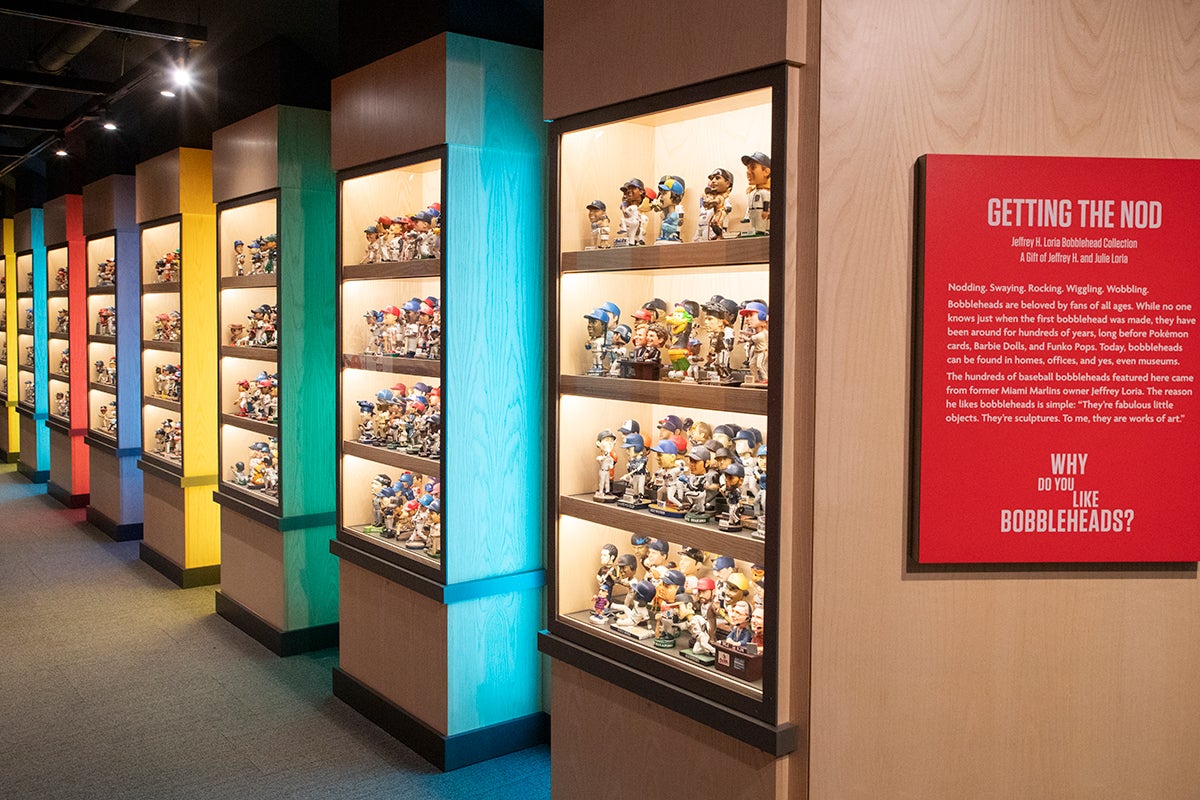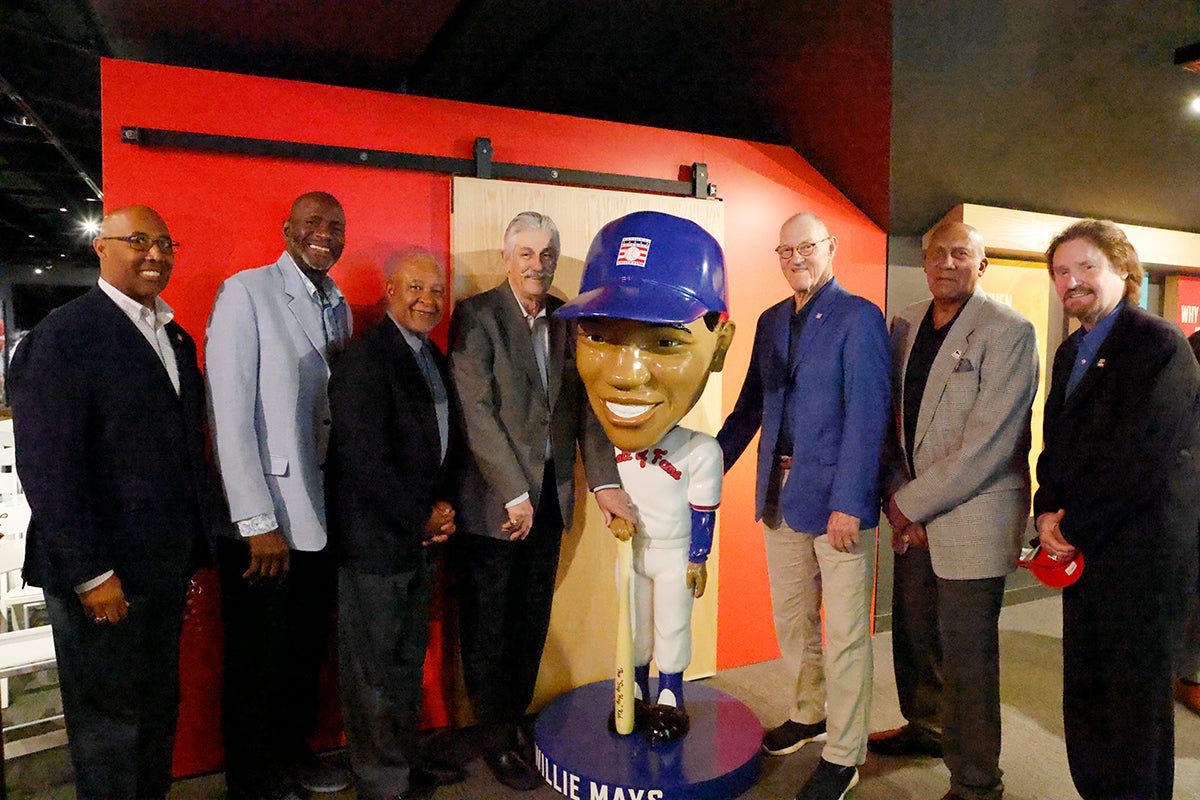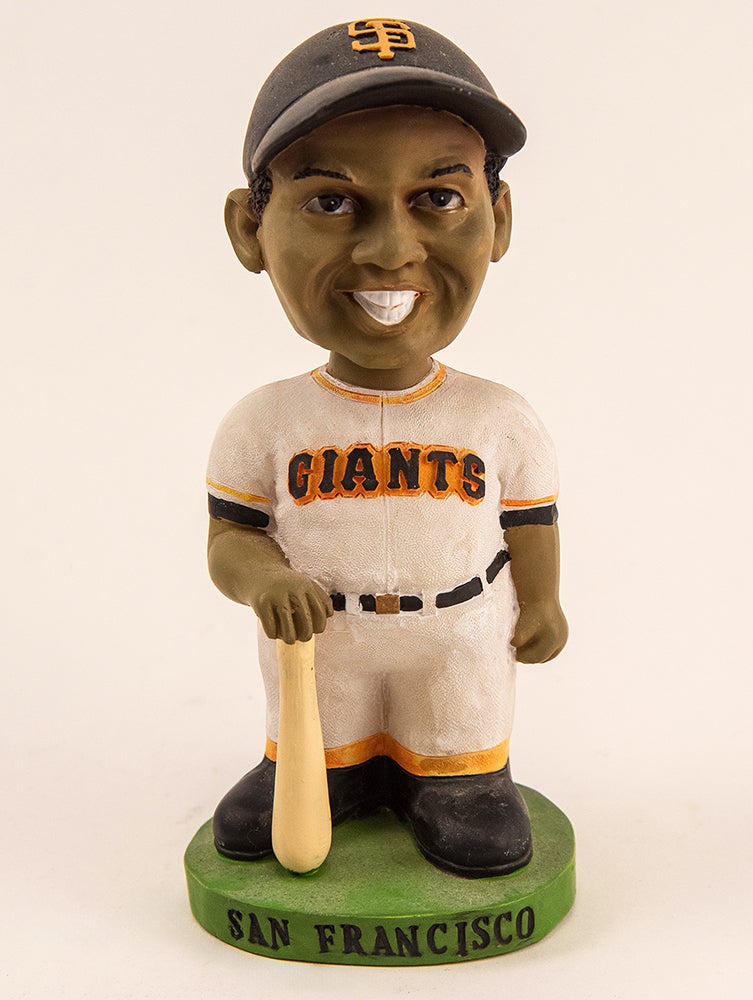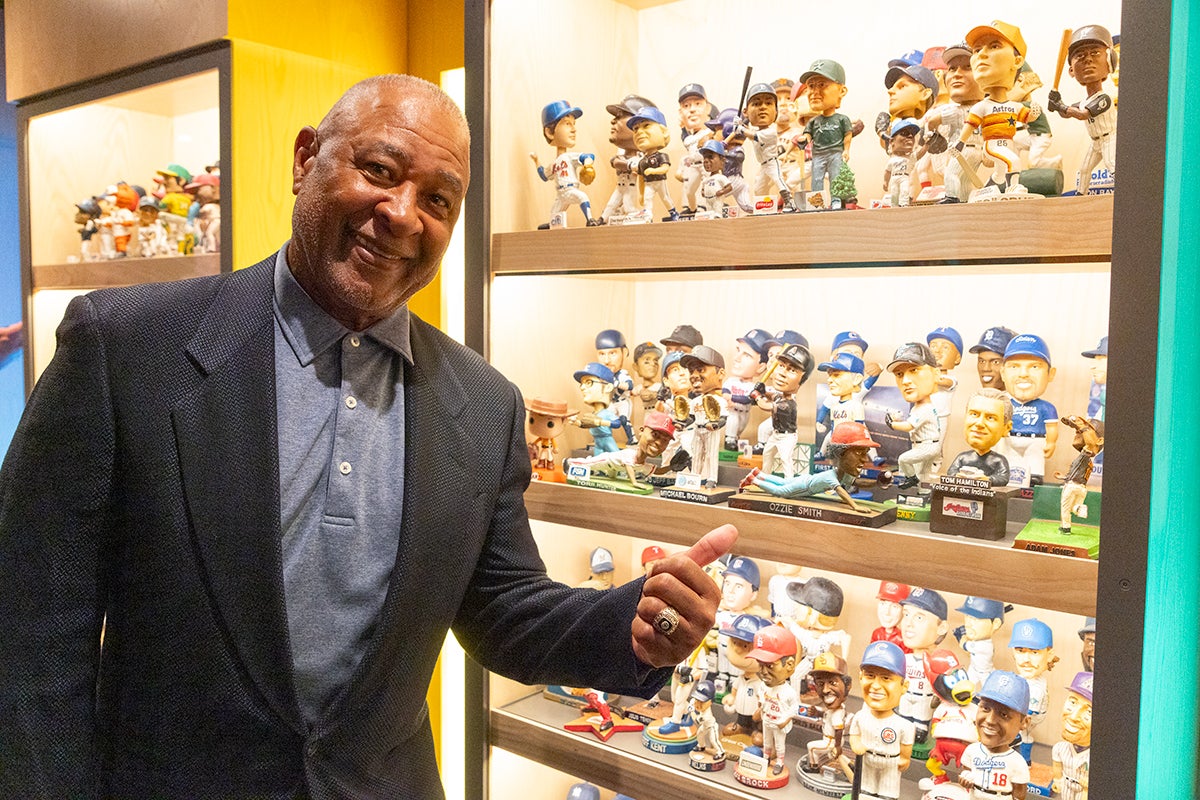Bobblehead exhibit shakes up Hall of Fame
“There’s a whole lotta shakin’ going on” is what the late singer Jerry Lee Lewis might say if he was to enter a special corner of the National Baseball Hall of Fame and Museum’s third floor.
It’s there where you may encounter the Museum’s newest exhibit, Getting the Nod, which officially opened to the public on Saturday, May 24.

Designed to be a celebration of bobbleheads as a baseball collectible, there are more than 700 bobbleheads in eight exhibit cases. The cases include a motion-activated element that, when triggered, will cause the dolls to bobble.
The bobbleheads were collected by Jeffrey Loria, former owner of the Miami Marlins, over a number of years. He donated them to the Museum in 2018.
At the Getting the Nod exhibit opening on the morning of May 24 there were seven Hall of Famers, including Harold Baines, Wade Boggs, Rollie Fingers, Fergie Jenkins, Jim Kaat, Lee Smith and Ozzie Smith as well as former big leaguers Vince Coleman, Julio Franco and Jason Kendall.
Also on hand was Jeffrey Loria and many members of his family to help with the ribbon cutting.

Hall of Fame Chairman Jane Forbes Clark introduced the exhibit, calling it “really a fun, wonderful tribute to the iconic bobblehead doll.”
“Since the first bobblehead doll emerged more than 60 years ago, nearly all of baseball’s most popular players have one,” she said to the assembled crowd. “And over the last 25 years, they have become a staple of promotional schedules for the major and minor leagues around the country.
“And with all thanks, Jeffrey, we are now celebrating this iconic piece of baseball culture in a very big way here in Cooperstown.”
For years, the bobbleheads from Loria’s collection were on display at Marlins Park, but when he sold the team, he generously donated his collection to the Hall of Fame. In the display cases are bobbleheads of players from Satchel Paige to Paul Goldschmidt, mascots like the Phillie Phanatic and even Charlie Brown.

Also debuting near the entrance of the new exhibit is a brand new bobblehead, but one that doesn’t fit in any of the cases – a six-foot tall bobblehead depicting Class of 1979 Hall of Fame inductee Willie Mays in a Hall of Fame jersey and cap.
The history of bobbleheads saw some down years until 1999, but a promotion by the San Francisco Giants brought them back to the forefront. The team offered a Mays bobblehead to visitors on May 9, 1999, to celebrate the 40th anniversary of Candlestick Park, which was the last year of the franchise playing at that ballpark. Soon, more teams began to offer bobbleheads to their fans.
“I absolutely love it,” said Loria when he addressed the crowd. “What most people don’t know, including me until just recently, is that bobbleheads started in the late 17th century in Asia as Buddhist ‘temple nodders,’ giving worshipers a nod of approval as they prayed. And then later on, in the 1700s, the British Prince of Wales was so enchanted by them - he couldn’t get over the bouncing heads - that he imported a legion of them to England.
“It took a little longer for the bobblehead to catch on in America. But in 1960, four years before The Beatles invaded the United States, bobbleheads successfully captured Major League Baseball. Each baseball team had a bobble head, and by the 1960 World Series, fans could collect Roberto Clemente, Mickey Mantle, Roger Maris and Willie Mays.”
According to Loria, he started his own collection 35 years ago with a Mickey Mantle bobblehead.
“While bobbleheads may not be ‘temple nodders’ - although fans, players and certainly owners, do a lot of praying at some of our games - they are for sure ‘memory keepers.’ Looking at each player’s face and form brings us back to the memory of an amazing play or a special day at the ballpark. In a way, they provide some special visual memories of a moment in time. At the same time, they’re like little painted sculptures. When I see a Mickey Mantle and Roger Maris head bobbling, as I just did, I remember the Yankee games that I went to and sat beside my father. And then, of course, there was Pudge Rodríguez’s bobblehead, which will always remind me of the Marlins’ 2003 storybook World Series. Ultimately, it’s all about making memories with family and friends.
“One of the many reasons I love baseball is that it’s a happy sport, and bobbleheads truly capture that joy.”

Loria then said he always thought that the perfect bobblehead would be Boggs atop a New York City Police Department horse with both heads bobbing, recapturing the moment the Class of 2005 inductee took a victory lap around Yankee Stadium after the 1996 World Series.
“Perhaps the horse and player bobblehead will make an appearance at Yankee Stadium this year,” Loria said. “I’m going to call (Yankees owner) Hal Steinbrenner.”
To which Boggs, sitting only a few feet away, replied, “Thank you, sir.”
After the exhibit opened, Loria shared the reason he donated his bobblehead collection to the Hall of Fame.
“Because I wanted more people to see them,” he said. “I wanted people to have an opportunity…You walk into this exhibition and you see the number, the sheer number, and to see them all in one room, to me, that’s astonishing.
“When I sold the team, I realized that they really need to be cared for, and there was only one solution. And when I called Jane, we got together, and voilà, here it is.”
Bill Francis is the senior research and writing specialist at the National Baseball Hall of Fame and Museum
